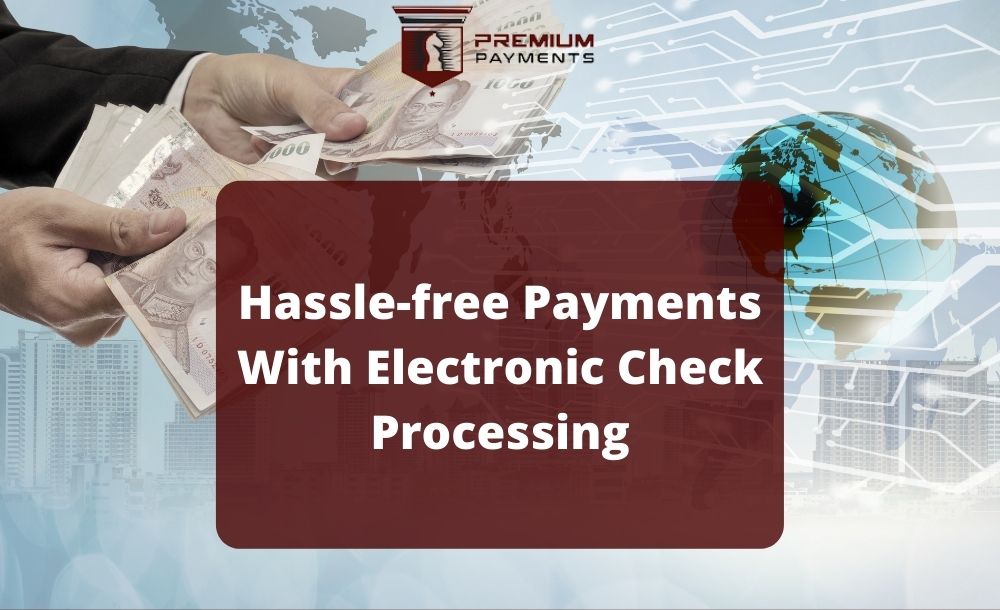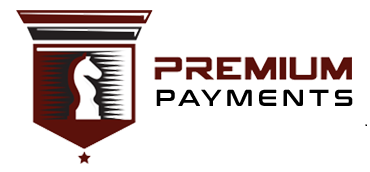
Are you tired of writing checks? Switch to eChecks. An electronic check or eCheck, as the name suggests is an electronic version of a paper check. Just like a paper check, an electronic check can be used to draw funds directly from the payer’s account.
eChecks are growing in popularity. They have several benefits. eChecks usually take less time to process than paper checks. They are a more affordable alternative to cards and paper checks. eCheck integration is easier than other payment processing. Most companies offering eCheck services charge nothing for set up.
One of the most effective ways to improve your customer experience is to give your customers as many payment options as you can. The more payment options your customers have, the more likely they are to spend their money and return to your business.
By integrating eChecks into your business payment options, you will deliver more value and convenience to your customers.
eChecks are popular among businesses that carry out a lot of high risk transactions. eCHecks eliminate middlemen. There are no interchange fees for their acceptance. Processing fees can be as low as 10 cents per transaction which can make a huge difference to businesses that accept large or recurring payments.
eChecks are more secure than paper checks. To reduce the potential for frauds and errors, electronic check processing companies authenticate every eCheck. Encryption is used to mask sensitive data. eChecks use digital signatures and public key cryptography. These security features protect sensitive data from getting into the wrong hands.
eChecks reduce paper use, which benefits the environment. Unlike paper checks, they do not have to be printed, sorted, presented, reconciled, placed in an envelope and transported.
eCheck transactions are carried out over the ACH (Automated Clearing House) network. Managed by the National Automated CLearing House Association or NACHA, the ACH network is an electronic system that can be used by financial institutions to facilitate financial transactions in the U.S.
The ACH processes more than 25 billion transactions every year. The total value of these transactions exceed $43 trillion. That’s almost twice the GDP of the U.S!
The ACH network acts as a hub. It can be used by individuals and businesses to move money from one bank account to another. ACH transactions comprise direct deposits and direct payments including consumer transactions, government transactions and B2B transactions.
An originator (can be a government or private organization or an individual) initiates a direct deposit or direct payment transaction using the ACH network.
An ACH transaction can be either debit or credit (also known as pull and push transactions). The originator’s financial service provider (bank) clubs the ACH transaction with other transactions to be sent out to a clearing house.
Before sending a push transaction, the original depository financial institution or ODFI debits the customer’ bank account by the transaction amount.
The clearing house receives the batch from the ODFI. The operator sorts the batch and makes transactions available to the intended recipient’s bank or the receiving depository financial institution (RDFI). If the transaction is a pull, the RDFI will debit the receiver’s account upon receipt.
In case the RDFI and the ODFI use different operators, the first operator switches the transaction to the second operator.
The ACH network processes transactions in batches. This makes online transactions lightning fast and hassle-free. A normal ACH debit transaction usually settles within a business day and an average ACH credit transaction should settle within 1-2 business days.
ACH payments are more affordable than credit card transfers and wire payments. Credit card transactions cost around two percent of the transaction amount, whereas wire transactions cost $10-$35 each. ACH transactions, on the other hand, cost under $1 per transaction.
If you already accept credit cards, ask your provider whether they are willing to incorporate ACH processing to your existing payment system. Choose a processing account that fits your needs and fill out the application form.
Provide important information such as your estimated processing volumes and the years your business has been in operation. The application process is usually fast and hassle-free.
Premium Payments offers top notch electronic check processing services. Our clientele includes small and mid-sized businesses and enterprise level businesses. No matter how unique your needs, we will come up with a payments solution that ticks all the right boxes for you.

Premium Payments offers cutting edge remote payment solutions. We are committed to helping businesses speed up their payment cycle by offering ACH payment services, Electronic check services and Credit card Processing services. We offer payment processing solution for Auto Dealers, law firm and attorneys, Insurance agents/companies, Accountants and Accounting firms, Non-profit organizations and Property management companies. Call (954)-934-9004, (305)-747-5855 or email us at info@premiumpymts.com To Start Your Risk Free Trial. No Credit Card Required.